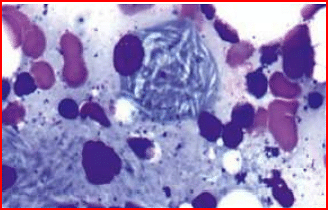Question:
A child presents with mental retardation, bone pain, and inability to walk. On funduscopic examination, a cherry red spot is seen. There is no organomegaly. What is the most likely diagnosis?
A child presents with mental retardation, bone pain, and inability to walk. On funduscopic examination, a cherry red spot is seen. There is no organomegaly. What is the most likely diagnosis?
Updated On: Jun 18, 2025
- Tay-Sachs disease
Niemann-Pick disease
- Hurler syndrome
- Gaucher disease
Hide Solution
Verified By Collegedunia
The Correct Option is A
Solution and Explanation
Tay-Sachs disease is the most likely diagnosis for the child described in the scenario. This disorder typically presents with mental retardation, bone pain, and inability to walk. A key diagnostic feature is the presence of a cherry-red spot on funduscopic examination, and importantly, this disease is characterized by the absence of organomegaly.
Let's break down the clues:
- Mental Retardation: Seen in several lysosomal storage disorders, including Tay-Sachs.
- Bone Pain and Inability to Walk: Neuromuscular symptoms are common in Tay-Sachs due to progressive central nervous system deterioration.
- Cherry Red Spot: A hallmark of Tay-Sachs is the cherry-red spot observed during funduscopic examination. This occurs due to the accumulation of gangliosides in the retinal ganglion cells.
- Absence of Organomegaly: Tay-Sachs disease is differentiated from Niemann-Pick and Gaucher disease, which typically include hepatosplenomegaly as a symptom.
Given these points, Tay-Sachs disease stands out as the most suitable diagnosis. This disease is caused by a deficiency of the enzyme hexosaminidase A, leading to an accumulation of GM2 ganglioside, particularly affecting the nervous system.
| Feature | Tay-Sachs | Niemann-Pick | Hurler | Gaucher |
|---|---|---|---|---|
| Mental Retardation | Yes | Yes | Yes | Variable |
| Bone Pain | Yes | Variable | Yes | Yes |
| Inability to Walk | Yes | Possible | Possible | Possible |
| Cherry Red Spot | Yes | Possible | No | No |
| Organomegaly | No | Yes | Yes | Yes |
Conclusion: The absence of organomegaly and presence of a cherry-red spot strongly indicate Tay-Sachs disease as the correct diagnosis.
Was this answer helpful?
0
0
Top Questions on Lipids
- A patient presents with xanthomas on the Achilles tendon. Which of the following is the most likely diagnosis?
- A patient with multiple tendon xanthomas is found to have a serum cholesterol level of 398 mg/dL and an LDL level of 220 mg/dL. What is the most likely defect?
- Which of the following has the lowest melting point?
- Ceramides are
- A child presents with bone pain and hepatosplenomegaly. A trephine biopsy and aspirate show the following finding. Which of the following is the most likely enzyme deficient in this condition?

View More Questions
Questions Asked in NEET PG exam
Which of the following cranial nerves is responsible for the motor innervation of the muscles of mastication?
- NEET (PG) - 2025
- General Science
The normal pH of arterial blood is:
- NEET (PG) - 2025
- General Science
Which enzyme is deficient in Gaucher’s disease?
- NEET (PG) - 2025
- General Science
The anticoagulant effect of heparin is monitored using:
- NEET (PG) - 2025
- General Science
The causative agent of malaria is:
- NEET (PG) - 2025
- General Science
View More Questions